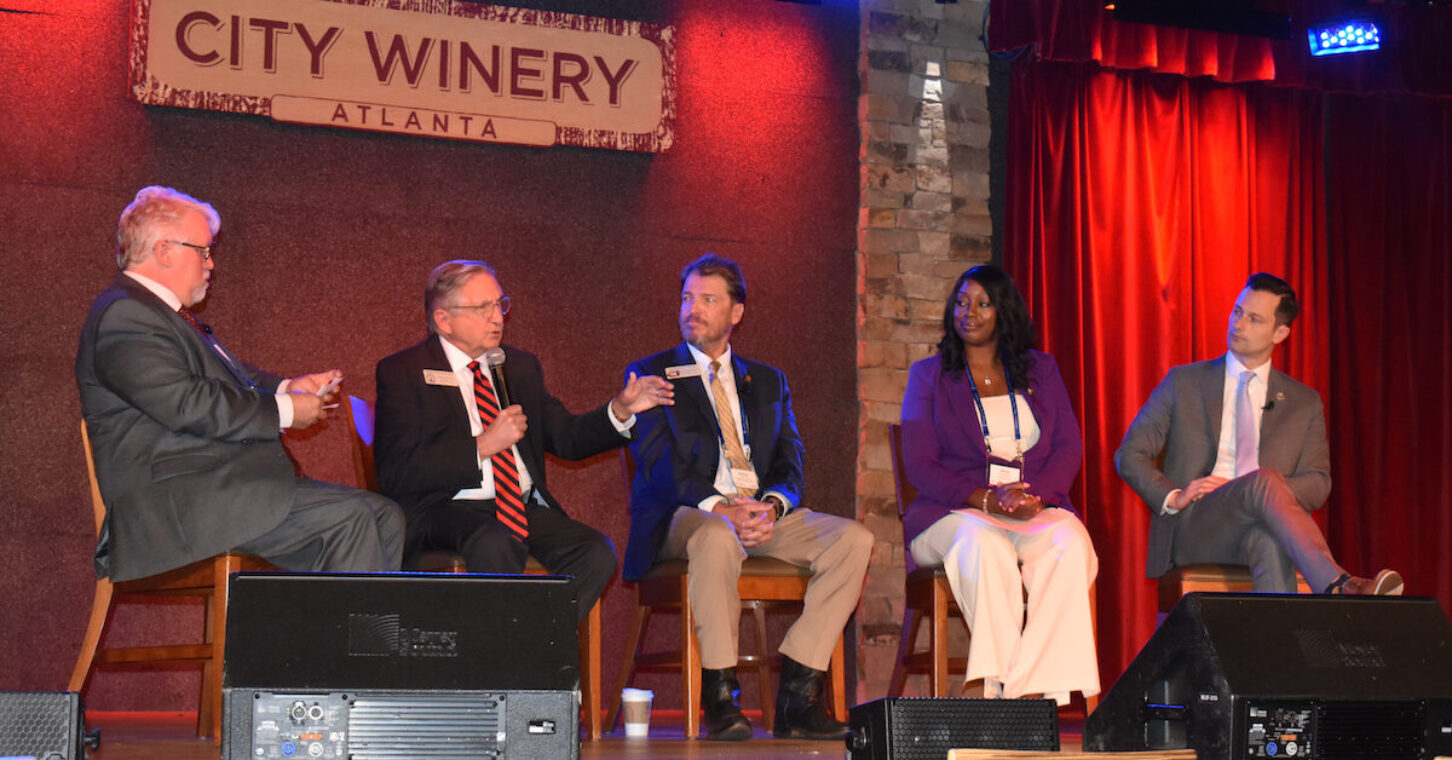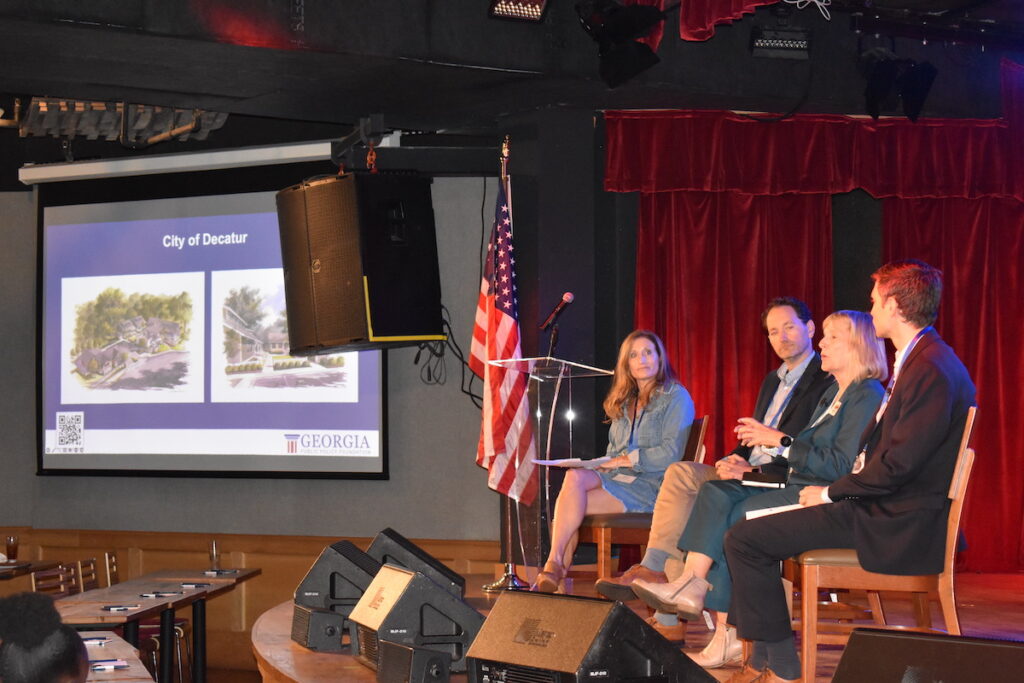
Housing affordability is a growing concern for many Georgia residents.
To explore solutions to this issue, the Georgia Public Policy Foundation hosted its first housing summit with the theme of “Innovating the Way to Affordability” last week.
The event consisted of four panels, each covering a specific area: Housing Policy, Neighborly Innovation, Financial Innovation and Building Innovation.
Kyle Wingfield, President of Georgia Public Policy Foundation, kicked off the event by outlining the main issue: housing supply. As he explained, “we simply aren’t building enough homes in the state of Georgia.”
Homebuilding has dropped by about half since the 2000s, despite a dramatic population increase. Wingfield noted that building has become too expensive because of public policy, but through innovation, this problem can be corrected.
Next, Chris Denson, Policy and Research Director at the Georgia Public Policy Foundation, gave an overview of housing data. Denson explained that housing affordability is driven by five factors: labor, land, lumber (building material costs), laws and lending (mortgage rates).
Unfortunately, wages have not kept up with housing prices for the last decade. Regulation, in particular, has been devastating to housing prices, as Denson illustrated how “nearly 27% of the cost of a new single-family home can be attributed to the combined cost of federal, state, and local regulation. For a $400,000 home, this means on average that $107,600 is due to the cost of government regulation.”
The Housing Policy Landscape panel featured a group of bipartisan state and local elected officials, including Rep. Dale Washburn, Rep. Spencer Frye, Gwinnett County Chairwoman Nicole Hendrickson and Woodstock Mayor Michael Caldwell.
The bipartisan panel expressed a strong consensus that more building and greater density is needed to supply current and future residents of Georgia with affordable housing.

Caldwell acknowledged the increased difficulty of housing affordability and the changes in public attitudes over housing density, as he expressed, “I’m watching the word ‘density’ stop being such a bad word.” He explained that the conversation has shifted toward “downtown revitalization,” particularly illustrated in the city of Woodstock, which has seen significant commercial and residential growth in the past decade.
Hendrickson also recognized that density is needed in areas that can support it. She explained that because of increased housing costs, people are realizing an urgent need for greater density, “but they don’t want it in their backyard.” Still, she explained, “we know that moving forward we have to build,” and that “a comprehensive plan is needed.”
Washburn agreed that “the path to any sort of financial stability … generally involves ownership in a home.” He cited local regulation as a contributor to the problem, explaining, “I have seen increasing control by local governments—beyond land use—that now is dictating design standards.” He recalled his time as county commissioner in the 1980s, when he realized the need for good planning and zoning and contrasted it with today’s local government regulations: “We did not see at that time the kind of control we have now granted.”
He lamented that Georgians are increasingly separated into two categories: those who can afford a $400,000 home and those who must live in an apartment.
Hendrickson asserted that increased density is “the only way our communities are going to be economically sustainable.” Further, she highlighted the importance of having various housing options available to fit diverse lifestyles.
One challenge with increasing density that most of the panelists cited was “NIMBYism” (Not-In-My-Backyard) which characterizes the feeling of many current Georgia residents who are opposed to increased density. Hendrickson constantly fights against this mentality. Frye agreed that this mentality is opposed to personal property rights, which this country was founded on. He recalled a personal story of a neighbor asking his permission to build a house, to which Frye responded, “it’s your property, do whatever you want to do.” He concluded, “I want people to be able to live where and how they want to live.”
Washburn believed that unfortunately NIMBYism is a natural tendency for many people who already have housing, but agreed that “if our state’s going to grow, our people have to have a place to live … and I don’t think we can let a small group of people who just happen to scream the loudest intimidate us.”
Caldwell echoed these sentiments, saying that, ironically, many people oppose increased density shortly after moving to an area. But as he expressed, “you don’t get to close the door behind you.” He further expressed that the government has a role to play in facilitating homeownership to support a thriving middle-class, asserting that “we made it a public policy priority in this nation that the average American would own a home.” He emphasized that “this is a fundamental policy priority.”
The next three panels focused on specific ways of improving housing affordability.

- In the Neighborly Innovation panel, Atticus LeBlanc, CEO of PadSplit, discussed new housing options that his company is creating focused on long-term room rentals. Tobias Peter, Senior Fellow at the American Enterprise Institute, advocated for “light touch density” housing, an approach that increases residential density in a way that is subtle or minimally disruptive to the existing neighborhood. And Patti Garret, Mayor of Decatur, explained a “cottage court project” which involves several small homes that share a communal green area.
- In the Financial Innovation panel, Tobias Peter gave a background of how the Federal Reserve, by keeping interest rates low during the pandemic, created an unsustainable environment that ultimately unraveled. To remedy this situation, Robert LaChapelle, Vice Chairman and Regional Managing Director for CBRE’s Debt & Structured Finance Group, asserted the importance of increasing supply and density through zoning changes. And Courtenay Dunn, Director of Government Affairs for ICE Mortgage Technology, explained how her company works to remove barriers to the acquiring mortgages for ordinary buyers.
- In the Building Innovation panel, Ramsey Cohen, Director of Industry and Community Affairs for Clayton Homes, explained how his company cuts costs by producing most sections of a house on a factory site. This process increases efficiency, speeds up building time, and reduces waste. The homes produced cost an average of $300,000. Nick DiLuzio, Vice President of the Georgia Forestry Foundation, explained how mass timber, a new wood product category, has the potential to transform the construction industry.
As Georgia grapples with the need for affordable housing, these discussions will pave the way for potential game-changing solutions.